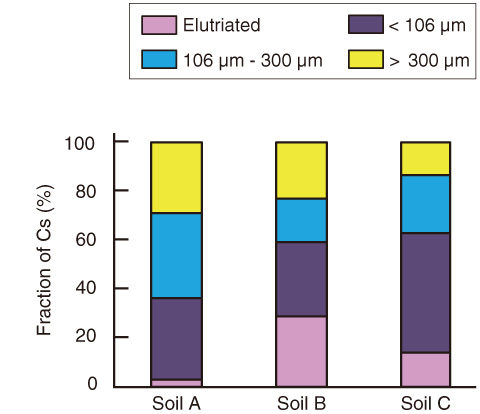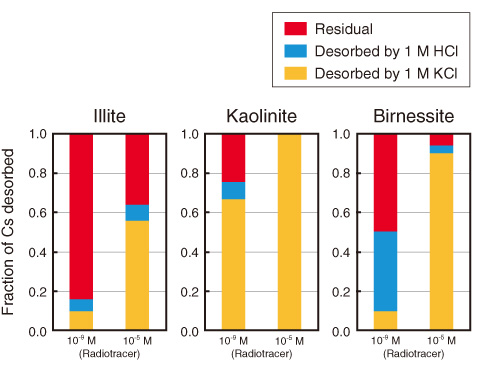
Fig.1-13 Size fractions of radiocesium in soils sampled in Fukushima Prefecture

Fig.1-14 Desorbed fraction of radiocesium from minerals at different cesium concentrations
Cesium (Cs) is known to be tightly associated with clay minerals. In particular, radiocesium is tightly associated with the interlayer of layered illite minerals contained in the small particulate fraction; consequently, the associated radiocesium cannot be desorbed by treatment with either acid or a cation solution. This tight association resulted in immobility of radiocesium after it was deposited to the soil in the accident at the TEPCO’s Fukushima Daiichi NPS. For remediation of the contaminated soil, the clay fraction was eliminated by sieving. However, most of the radiocesium remained in some soils after the sieving treatment (Fig.1-13).
To clarify the tight association of radiocesium with minerals other than illite-like minerals, we conducted sorption and desorption experiments with radiocesium on 17 minerals using 1 M KCl and 1 M HCl solutions as desorption reagent solutions. Because the chemical concentration of radiocesium was extremely low, two different concentrations of radiocesium were considered: a contamination level of 8000 Bq/kg and a minor elemental level in the soil. At the contamination level of radiocesium, 0.3 and 0.5 fractions of radiocesium remained in kaolinite and birnessite, respectively, after the treatment (Fig.1-14).
In the natural environment, minerals are altered by weathering to generate tight association sites in the altered minerals. Unfortunately, the number of tightly associated sites is very limited in kaolinite and birnessite compared to that in illite. When the concentration of radiocesium is extremely low, most of the radiocesium is easily bound in the tightly associated sites.
This finding of a tight association of radiocesium with non-illite minerals reveals a more effective remediation method for contaminated soils. For instance, the soil fraction of less than 300 μm suggests a threshold for the appropriate remediation method of the contaminated soil fraction.